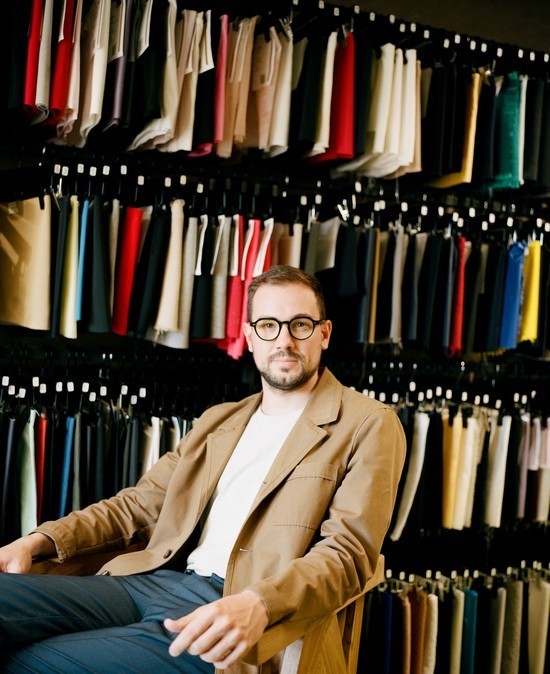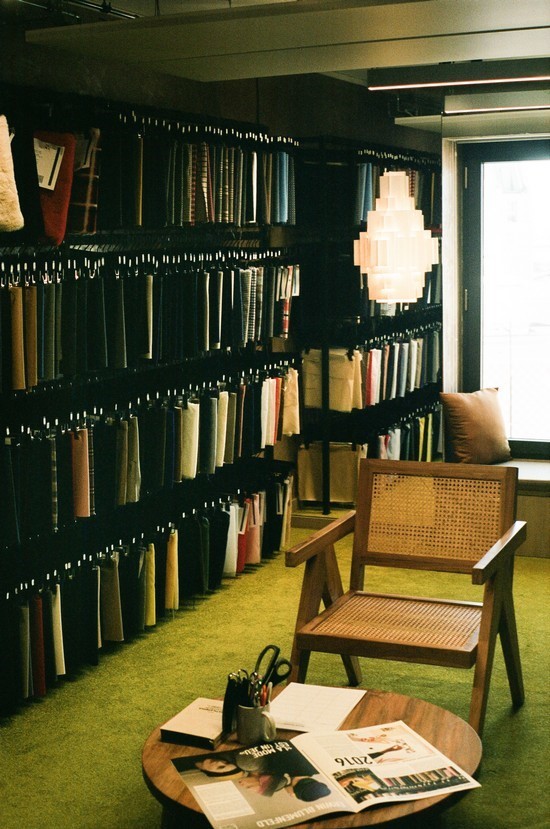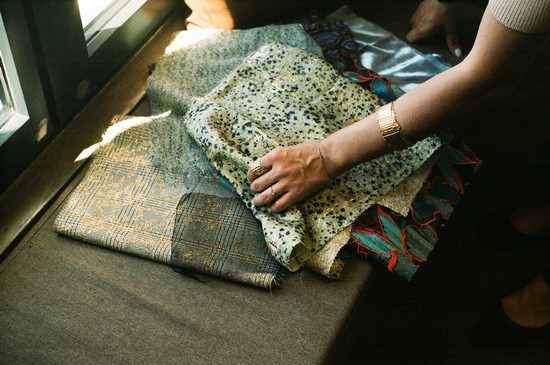As
Givenchy’s fabric buyer, Romain Brabo
often visited the French couture house’s fabric warehouses, seeing bolts of
leftover silk, lace, tulle, cashmere, wool, and more piled up, all forgotten.
The most exquisite were from past couture collections by
Christian Dior or
Givenchy, when a studio would use material for a runway look and possibly a few
made-to-measure orders, then ship the remainder off to storage.
اضافة اعلان
“I thought, ‘Why not offer this to everyone?’” Brabo
said as he stood in the center of a small room of La Caserne, a former
firehouse in northern Paris that has been converted into a fashion incubator.
The room was lined with racks of fabric swatches.
“That’s how I came up with this,” he said, sweeping
his arm around the space.
Brabo was referring to Nona Source, a showroom named
for the Roman goddess of textiles. He helped found the showroom to offer unused
fabric — or “deadstock” — from LVMH brands like Christian Dior, Givenchy,
Celine, and Fendi to in-house design teams for capsule collections, special
orders or marketing projects, as well as emerging independent designers, at a
steeply discounted price. Nona Source’s deadstock is up to 70 percent off
wholesale prices, Brabo said. In May, Nona Source opened a second showroom, at
the Mills Fabrica, a tech-style coworking space and incubator in Kings Cross in
London. And there is talk about expanding to Southeast Asia — most likely Hong
Kong or Singapore — and the US.

“We wanted to incentivize creative reuse and do so
at a super-competitive price,” Brabo said. “We revalue all of our materials, so
nothing goes in the trash.”
As some
fashion companies transition to a more
sustainable business model, there has been much talk of circularity — the shift
from a linear way of producing and selling products, known as “make-use-waste,”
to one that makes recycling and zero waste priorities. For global brands, that
has meant rethinking and reshaping wasteful policies; for independent, and
often young, companies, eco-conscious practices like circularity are often a
founding principle.
These two segments of the industry rarely work in
tandem. With Nona Source, Brabo is trying to change that.
In 2019, Brabo joined LVMH’s innovation program,
DARE (Disrupt, Act, Risk to be an Entrepreneur), and transformed his deadstock
idea “into a concrete project,” he said. The platform debuted online in April
2021, and the showroom followed in September 2021.

“The COVID-19 lockdowns actually accelerated Nona,”
Brabo said. Because the fashion industry was nearly at a standstill, with no
shows or store openings, “we could push it through fast. The doors were all
open.”
In the first season, Nona Source had 300 customers,
and 90 percent were young designers, according to Brabo; by May of this year,
that figure had doubled to 600, throughout Europe. The platform is open only to
registered businesses, and there are roughly 1,000 samples to peruse. Silk
satins are the most popular, followed by double-face cashmeres.
“We’re all sold out now,” Brabo said, referring to
the cashmeres.
Designers usually begin by scrolling through the
offerings online, with photos and films of the materials in high definition.
For Steven Passaro, a 30-year-old French designer who was an early tester of
the project, Nona Source is a boon for two reasons.

“One of the most difficult obstacles for young
designers is having access to small quantities of quality fabrics,” Passaro
said during a visit to his studio in Les Ateliers de Paris, a city-owned art
center near the Bastille. “Usually, the minimum order is 50 or 100 meters. But
we sometimes do only five pieces of each look. With Nona Source, we can find
fabric for such short runs.”
Then, too, Passaro explained that he does most of
his designing on computers with 3D software. “We go on Nona Source online, take
a screenshot of the sample and drop it into the design,” he said, demonstrating
on a desktop in his atelier. “Then we can see exactly what the sample will look
like. I still go over to La Caserne to see the material — touch it, feel it.
But by making our first selection this way, we avoid a lot of waste, save a lot
of time, and it’s cost-efficient.”

Arturo Obegero, a 28-year-old Spanish designer who
was also an early tester of the project, began by buying small rolls, which he
used for samples that he sewed at home. He was so pleased with the result, he
bought bigger rolls of “a black wool that looked like denim — lots of structure
— and black lace” for his fall-winter 2022-2023 collection of sharply tailored
menswear and womenswear, which he showed during fashion week in February.
“Sustainability is treated like a marketing tool in
fashion, but it should be a rule to follow,” Obegero said. “Everyone should be
sourcing this way.”
Brabo chose the Mills Fabrica for the London
location because it’s a short walk from the Kings Cross and St. Pancras train
stations, as well as from Central Saint Martins, the fashion and art university
where LVMH has Maison/0, a creative platform for regenerative luxury.
“I was the first UK customer,” said Sarah AlHamdan,
a 34-year-old Saudi designer in
London. She came across Nona Source online
while researching materials for her Mood of Thought label and was so bowled over
by it, she took the Eurostar to Paris and went directly to La Caserne.
Brabo said that AlHamdan “immediately” understood
Nona Source.
“Using scraps forces you to be more innovative,”
AlHamdan said. “And these fabrics are so fantastic, so elevated, so luxury.”
Read more Fashion
Jordan News



